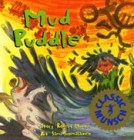 I am a huge fan of Robert Munsch and have been since he visited our public school, many moons ago, to read to our class the story of The Paperbag Princess. You might remember Munsch from your own childhood; he travelled Canada and the U.S. visiting classrooms and sharing his stories, not because it was a sales driver, but because it was what he loved to do.
I am a huge fan of Robert Munsch and have been since he visited our public school, many moons ago, to read to our class the story of The Paperbag Princess. You might remember Munsch from your own childhood; he travelled Canada and the U.S. visiting classrooms and sharing his stories, not because it was a sales driver, but because it was what he loved to do.
If you’re not familiar with his work, Munsch is a popular and much-loved Canadian/American children’s author originally from Philadelphia, Pennsylvania. His personal story and professional accomplishments are fascinating, yet it wasn’t until fairly recently that I began to think about how his successes translate so well to marketing.
As I grew from a fan of his books to a fan of his career as an author, it struck me that Munsch has done for decades precisely what marketers today are trying to achieve. Munsch is probably my single greatest influencer… and I’m not even a children’s author! He is a master children’s storyteller, but also understands relationship building and how it applies across the content cycle – from creation right through to promotion – better than any other person I’ve yet to witness.
Lessons from the Life and Works of Robert Munsch
Munsch has authored over 50 children’s books spanning his career. The most popular of his stories, Love You Forever, had sold over 18 million copies between its release in 1986 and the last New York Times Bestsellers perennial sales update I could find, from 1999.
As a bit of background on his earlier years (with commentary from his website), Munsch:
- Was an unexceptional public school student (Munsch: “I almost flunked first grade and also the second, third, fourth and fifth.”)
- Was also unsuccessful in studying for priesthood (“I was lousy priest material.”)
- Worked part-time in an orphanage (“to escape deadly classes in philosophy.”)
- Earned his Master’s in Anthropology (“That’s what they give you when you flunk your orals for your Ph. D.”)
- Returned to school for Child Studies and worked in daycares until budget cuts resulted in a layoff, at which time he and his wife moved to Canada.
Munsch actually began telling stories to children because, as he puts it, “I discovered that I could get the kids to shut up during nap time by telling them stories.” What, this isn’t the pedigree or perfect recipe for a master marketer you had in mind? Yet he went on to become one of the most prolific children’s authors of our time. Both his personal and professional stories have been incredibly useful to me as a writer and content creator; I hope you are able to take away from his experience lessons you can use, as well.
Do What You Love and Love What You Do
 For ten years, Munsch told his stories, yet never wrote them down. He didn’t feel he was especially gifted and even refused to publish a book when it was first suggested to him. Finally, his boss flat out told him to write one of his stories and even gave him two months off to do it. According to Munsch, he wrote ten different stories and sent them to ten different publishers, nine of whom responded with rejections. One, however, took him on and published Mud Puddle.
For ten years, Munsch told his stories, yet never wrote them down. He didn’t feel he was especially gifted and even refused to publish a book when it was first suggested to him. Finally, his boss flat out told him to write one of his stories and even gave him two months off to do it. According to Munsch, he wrote ten different stories and sent them to ten different publishers, nine of whom responded with rejections. One, however, took him on and published Mud Puddle.
He was such a great storyteller that the people around him encouraged him to share his stories more widely; this is not a person with an inherent need to self-promote. Can you imagine doing something with no tangible pay-off for a decade for any reason other than your love for what you’re doing? I can’t. When you love your business this much, sharing stories about it comes easily.
Use Your Audience for Content/Product/Service Research
Munsch used the children in his care as inspiration for his stories. Even after he was able to quit his job and become an author full-time, he would write stories for a particular child and make that child the main character in the story. His publisher hated this, he’s said, as it meant each story contained a new character and this flies in the face of traditional publishing norms.
As an author and storyteller, Munsch traveled to schools and daycares, then later to children’s festivals and events, where he would tell his stories to anywhere from a few to a few thousand children at a time. He was completely immersed in his “industry” and had the benefit of insight you can only get directly from your target market baked right into his content creation process.
He had the ability to begin telling a story and change it on the fly if it clearly didn’t resonate with his audience. Publishing changes that, as you may well know; blog posts, social content and other marketing materials are pretty much “out there” once you hit the button to share it with the Internet. It’s difficult now to make modifications to existing content without also publishing an explanation or retraction.
By the time Munsch created a product by actually writing a book, it had already been field-tested by children across the continent. He knew his audience and their likes, beliefs and preferences deeply. This is critical for marketing content creators. While it’s likely not possible for you to sit in the same room as your audience members and figure out the best story by trial and error prior to publishing, the state of digital marketing has given you a wealth of information to help drive the direction of your content. Consider:
- Website analytics
- Social media sentiment
- Direct feedback in webforms, call centers, blog comments, social channels, in-store, and at all other points of customer contact
- Passive feedback via sales data, abandoned shopping carts, dropped customer service calls (that’s still telling you something!) and more
- Performance of previous pieces of content, whether in the form of a blog post, press release, e-book, podcast, video or other.
All of this can be used to build buyer personas, based on demographic and psychographic data. Know who you are writing for before you pick up your pen (or fire up the laptop).
Build Out Your Content Catalogue
That first published book, Mud Puddle, sold 3,000 copies in its first year. This was not a blockbuster by any stretch of the imagination, yet Munsch kept writing. Slowly and with each new release, his books saw better sales. According to the author, Mud Puddle had its best year for sales ten years after its release.
Print books have long included a list of the author’s previous works on the jacket or within its pages. Today, we are able to hyperlink back and forth between published works, yet many marketers fail to use this strategy properly. Linking content goes beyond SEO and even navigation by offering readers a better user experience, via simple access to other relevant information on any given topic. Write well and write often, then make sure your audience can access more of your content catalogue by:
- categorizing content in a logical, organized way
- linking to older, evergreen pieces within new content where it offers value to the reader
- refreshing existing content as necessary to keep it relevant.
Let People Love You First
I don’t even remember if Robert Munsch brought books to our school when he came to tell us the story of The Paperbag Princess. I’m quite positive he didn’t sit down in front of us seven-year olds and pitch us a special bonus if we bought TODAY, at the low, low one-time only price of [insert insanely low price for a book in 1980-something here].
No, Munsch came to tell us a story. Did he ever! That I remember the pitch of his voice changing through characters and the expressions on his face all these years later is a testament to his storytelling skills.
And yet, we went home and begged our parents to please, please buy us The Paperbag Princess. And Murmel, Murmel, Murmel. And I Have To Go! Each time he released a new book, rabid fans ran home across North America to pester their parents into buying the latest Robert Munsch book. Why? Because we LOVED him!

Robert Munsch, as seen at Canada’s Walk of Fame ceremony. From CanadasWalkofFame.com.
We were buying whatever he was selling because he had created an intensely loyal fan base through his product and relationship building. This didn’t happen overnight, yet his taking the time to actually visit schools, connect with his audience and share a part of himself with us has paid off by way of an entire generation of parents eager to introduce his stories to their own children.
Here are just a few more content tips based on insanely awesome things Robert Munsch has done:
- Make your content accessible. Do you have customers outside of the English language? Do you ship globally yet offer phone support only in North America? Your promotion, post-sales support and loyalty building content must be available and accessible to your audience, wherever and whoever they may be. As of last year, three of Robert Munsch’s books had been translated to Inuktitut, the Inuit language of his fans in Canada’s northern-most regions.
- Take every opportunity possible to surprise and delight your audience. Munsch delighted in showing up unexpectedly at schools when he was in the area, to tell his stories to students who may have written him a letter or otherwise tried to contact him. Never miss out on the chance to provide a memorable experience for the people who keep your business going.
- Do what it takes to stay so involved in your business you can’t help but be inspired. If you find yourself short on ideas for content relevant to your business, the problem just might be that you aren’t spending enough time in it. But I work all the time! you might say. Listen more! Tune in to the inspiring things going on around you. Munsch stayed with families as he toured the country, first out of necessity when he couldn’t afford hotel rooms, then simply because he enjoyed it. On his website, he shares the story of a visit to South Carolina, where the daughter of the household told Munsch all about her grandfather, who had broken both his arms hunting. “I would never have thought of a story about a kid visiting her 101-year old granddad,” he writes.
- Entertain to capture attention and engage. So your product or service probably isn’t as inherently funny as a kid who has to go pee as soon as they’re all bundled up in their snowsuit. Your audience members are still looking for something from you and chances are, it needs to have some entertainment value in order to make it stand out in the sea of content to which they’ve already been subjected. Find that angle that can inspire and engage your readers and you’re golden.
Munsch’s experience in traditional publishing holds many important lessons for people navigating new media, more distribution channels and the highly connected nature of consumers in the age of digital marketing. The Internet moves fast, yet sometimes what we really need is to slow down, remember what works, and reconnect with our passion for what we do, in order to share knowledge and information in a way our audience can appreciate.
Who has influenced you most as a marketer? Tell us about your role models in the comments!
A very special thanks to Robert Munsch for sharing so much of his experience (used as background for this post) on his website. And also, for being awesome in general.


